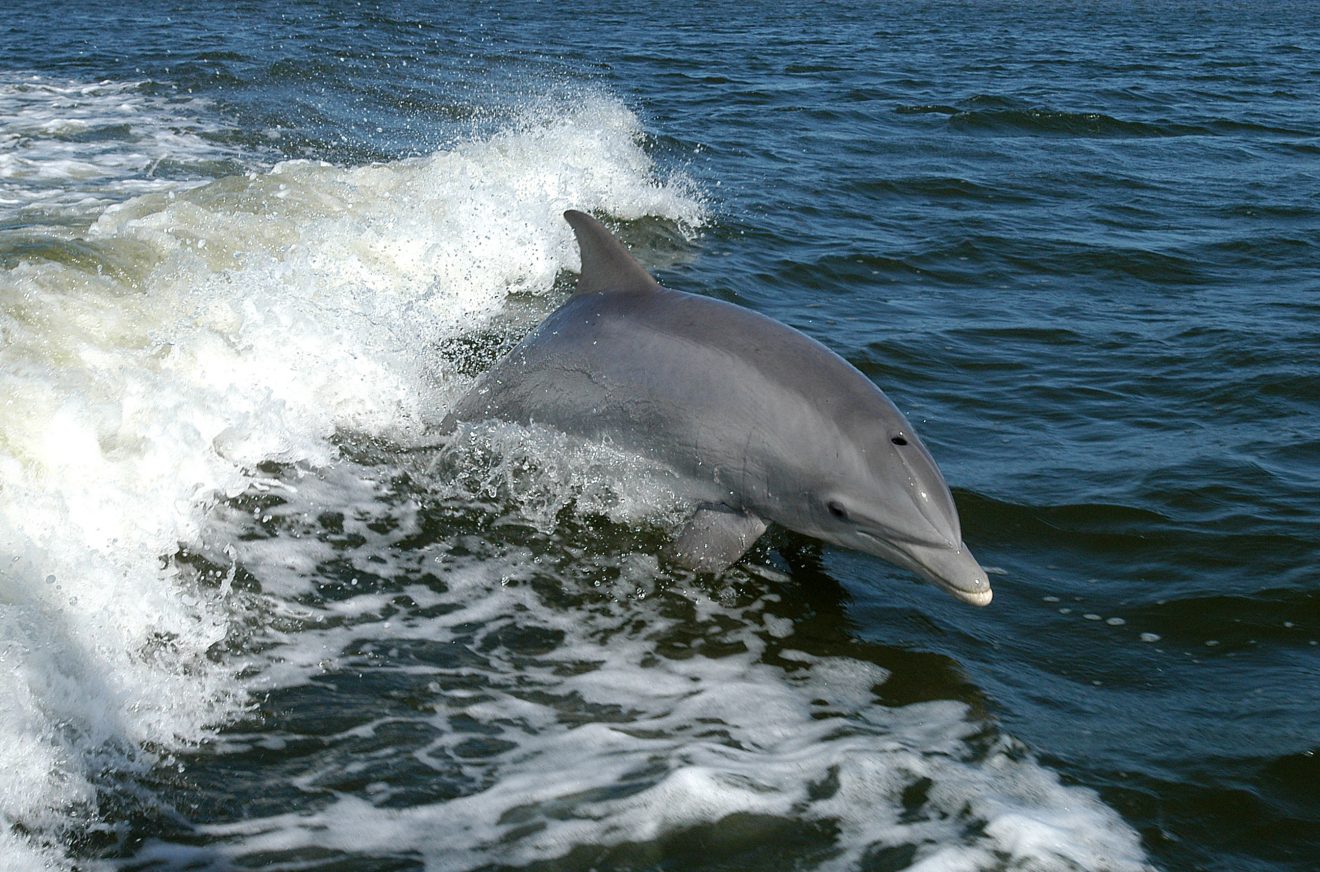Research: Algal Bloom Neurotoxin Found During Non-Bloom Periods
Florida Tech-Led Study Highlights
Emerging Threats to Estuary Organisms
MELBOURNE, FLA. — A potent neurotoxin that has long been associated with mass die-offs of marine mammals during harmful algal blooms has been detected in bottlenose dolphins from the Indian River Lagoon estuary.
A study led by Florida Tech indicates the neurotoxin saxitoxin is present both during the bloom season as well as during non-bloom periods, a discovery that suggests this neurotoxin is an emerging threat to any organisms living in the Indian River Lagoon.
In “Comparison of during-bloom and inter-bloom brevetoxin and saxitoxin concentrations in Indian River Lagoon bottlenose dolphins, 2002-2011,” published recently in the journal Aquatic Toxicology, Florida Tech assistant professor Spencer Fire, Florida Tech graduate student Jeremy Browning and Wendy Noke Durden and Megan Stolen from Hubbs SeaWorld Research Institute analyzed liver samples from 119 dead-stranded bottlenose dolphins collected from 2002 to 2011.
They were looking for saxitoxin, which is produced by Pyrodinium bahamense, a species of harmful algae that is abundant in the Indian River Lagoon. (These algae are bioluminescent and a popular attraction for kayak tours.) As expected, the researchers found saxitoxin in dolphins when there were Pyrodinium blooms happening, but they also found it in dolphins when there were no blooms.
“Since bottlenose dolphins are a marine sentinel species, we looked at saxitoxin in their food web as a way to look for possible health threats to the IRL as a whole, including humans and commercially important fish,” Fire said.
The study is also valuable because it establishes what background levels of saxitoxin exposure are in the lagoon, so should a future dolphin mortality event be caused by Pyrodinium, investigators will have a point of reference to compare toxin values and the severity of injury.
Fire said researchers have only known about Pyrodinium bahamense’s toxicity in the IRL since the early 2000s. The species naturally produces the toxin, but as the lagoon gains excess nutrients via runoff from land, the algae have the potential to bloom more often and severely, leading to more saxitoxins being introduced into the food web.
Fire and colleagues from Harbor Branch Oceanographic Institute at Florida Atlantic University also recently completed a separate three-year study of the major prey species for this particular dolphin, which revealed approximately 25 percent of the fish examined in the Indian River Lagoon contain saxitoxin.
And in January, Fire, under a collaboration led by Florida Tech biomedical and chemical engineering and sciences assistant professor Toufiq Reza and ocean engineering and marine sciences professor Ralph Turingan, has submitted a grant proposal to the National Oceanic and Atmospheric Administration on a possible method for removing saxitoxins and Pyrodinium from the water. The research would involve harvesting phytoplankton during a bloom, converting it into a biosorbent char material, and re-introducing that material into the water as a bloom mitigation strategy. Lab testing is being done to determine the feasibility of the concept.
The paper in Aquatic Toxicology is available here.
###





